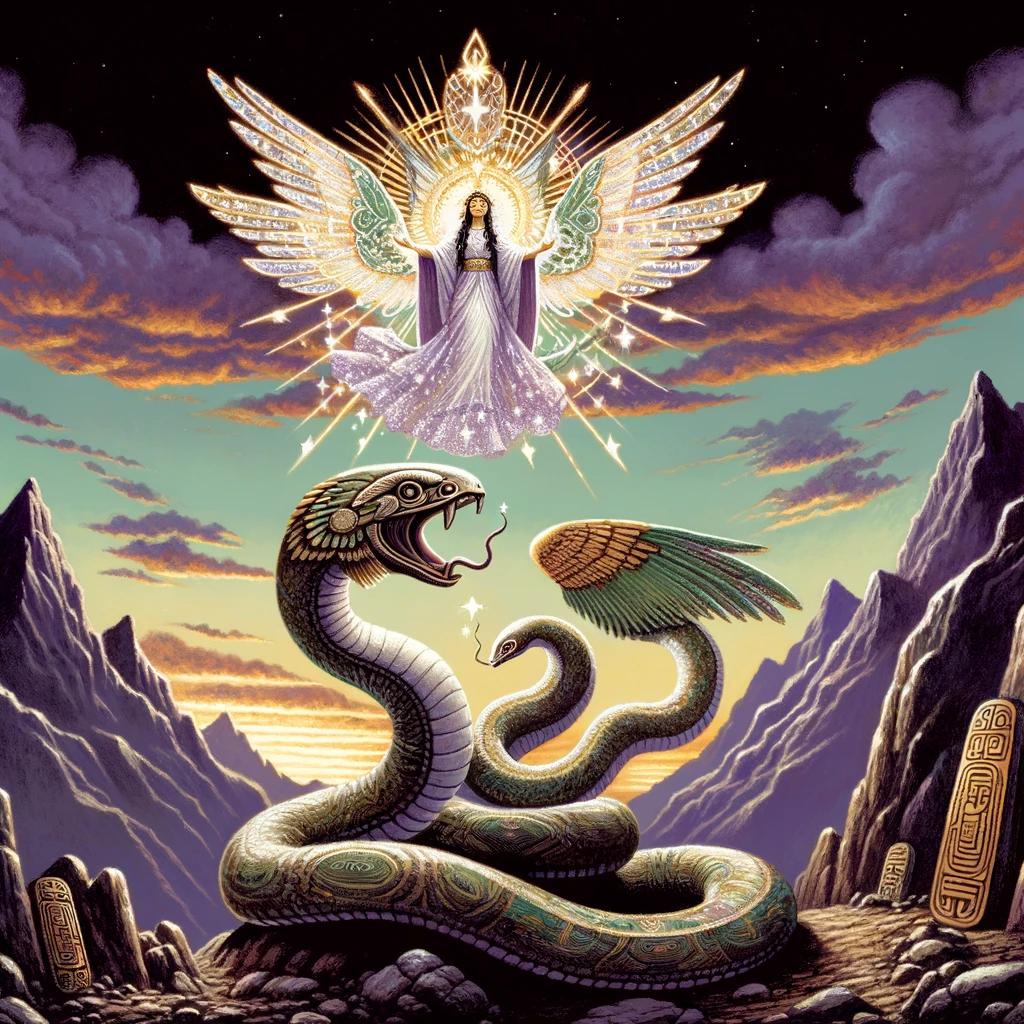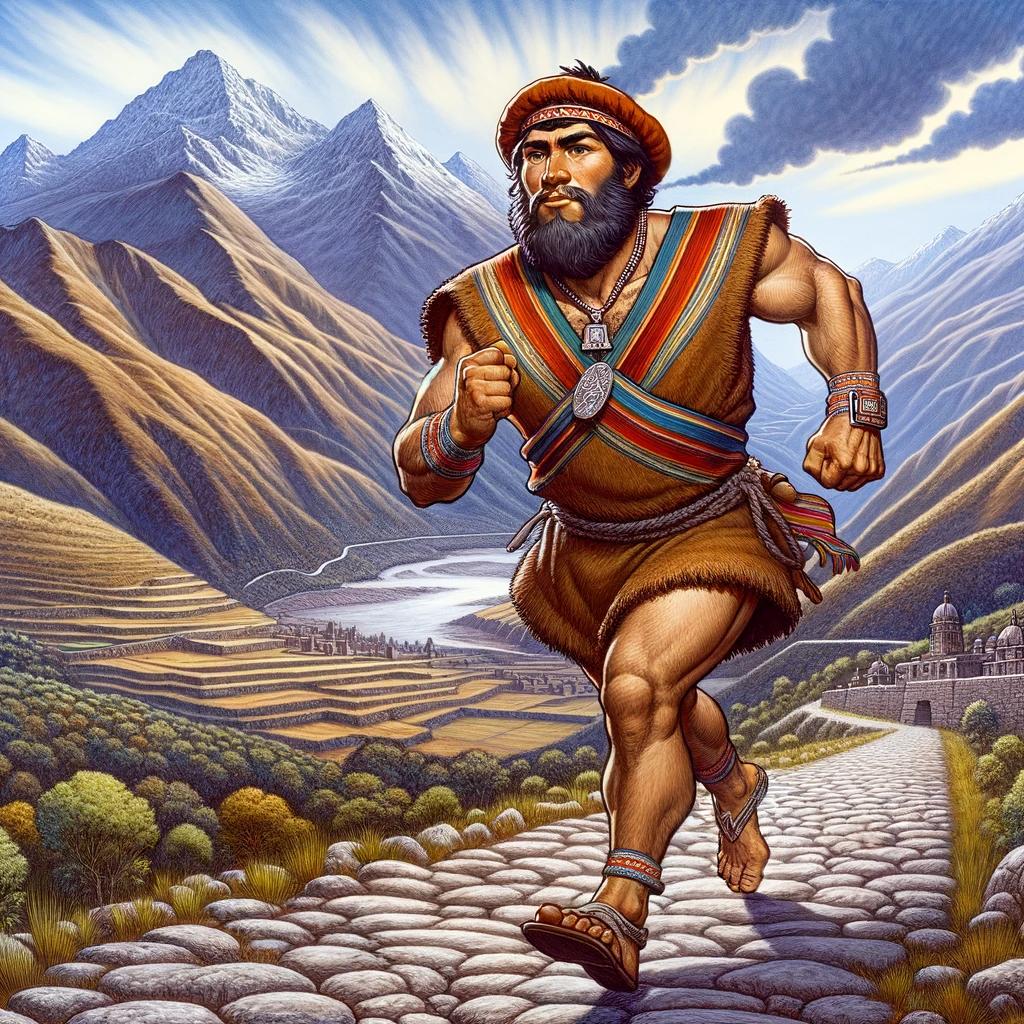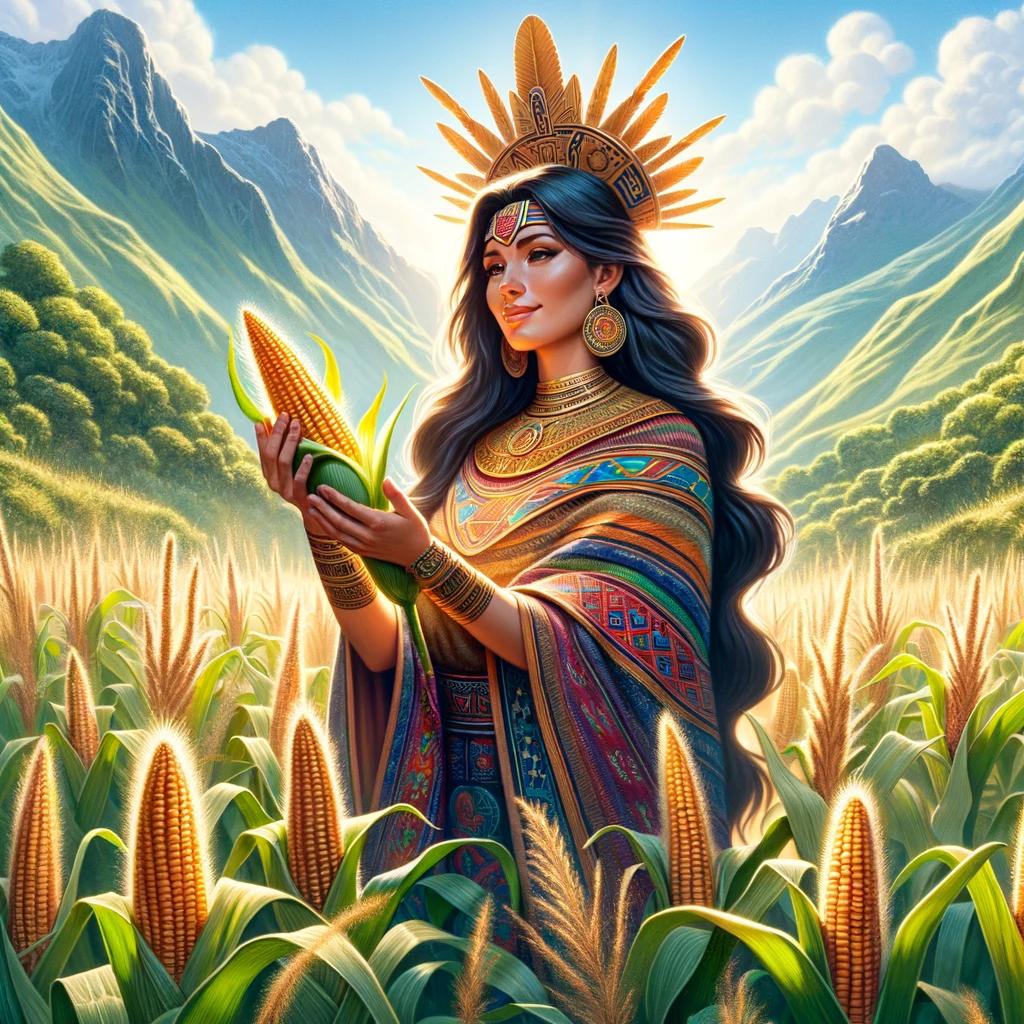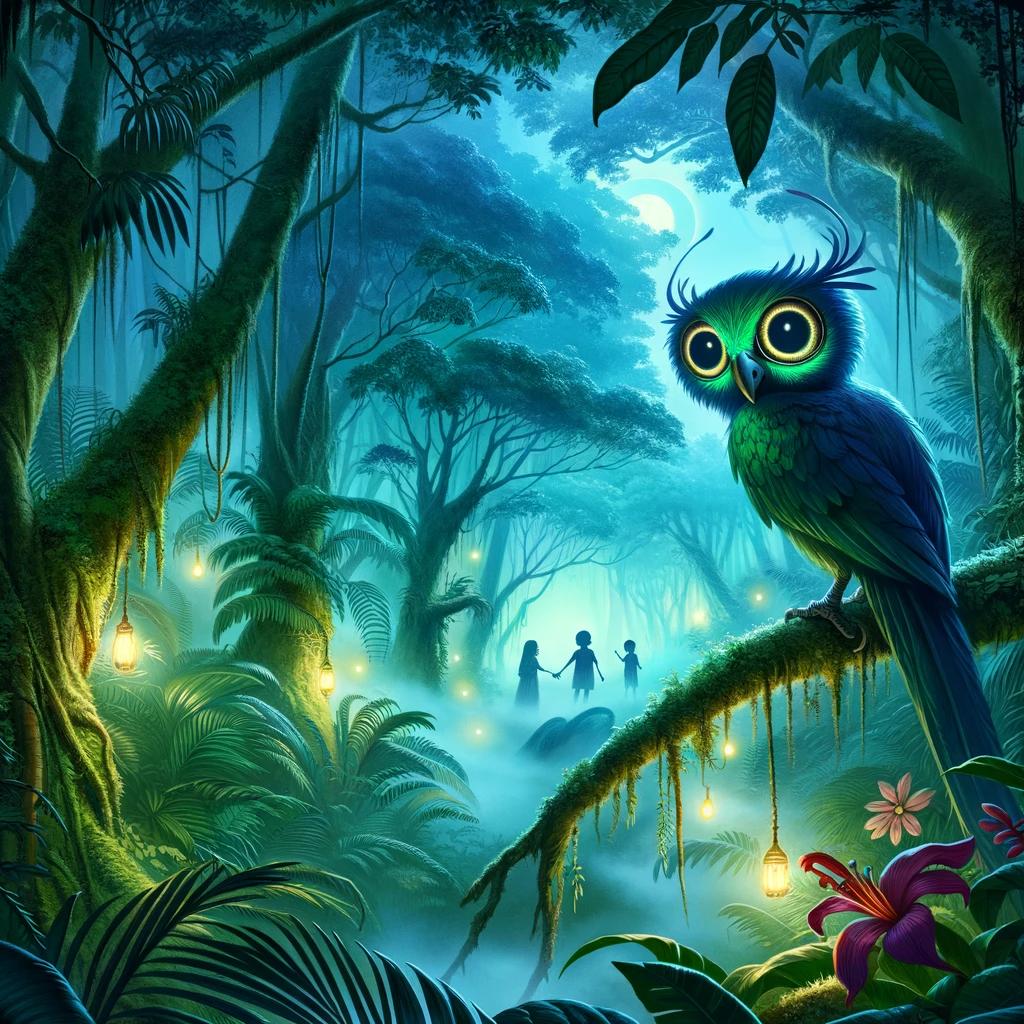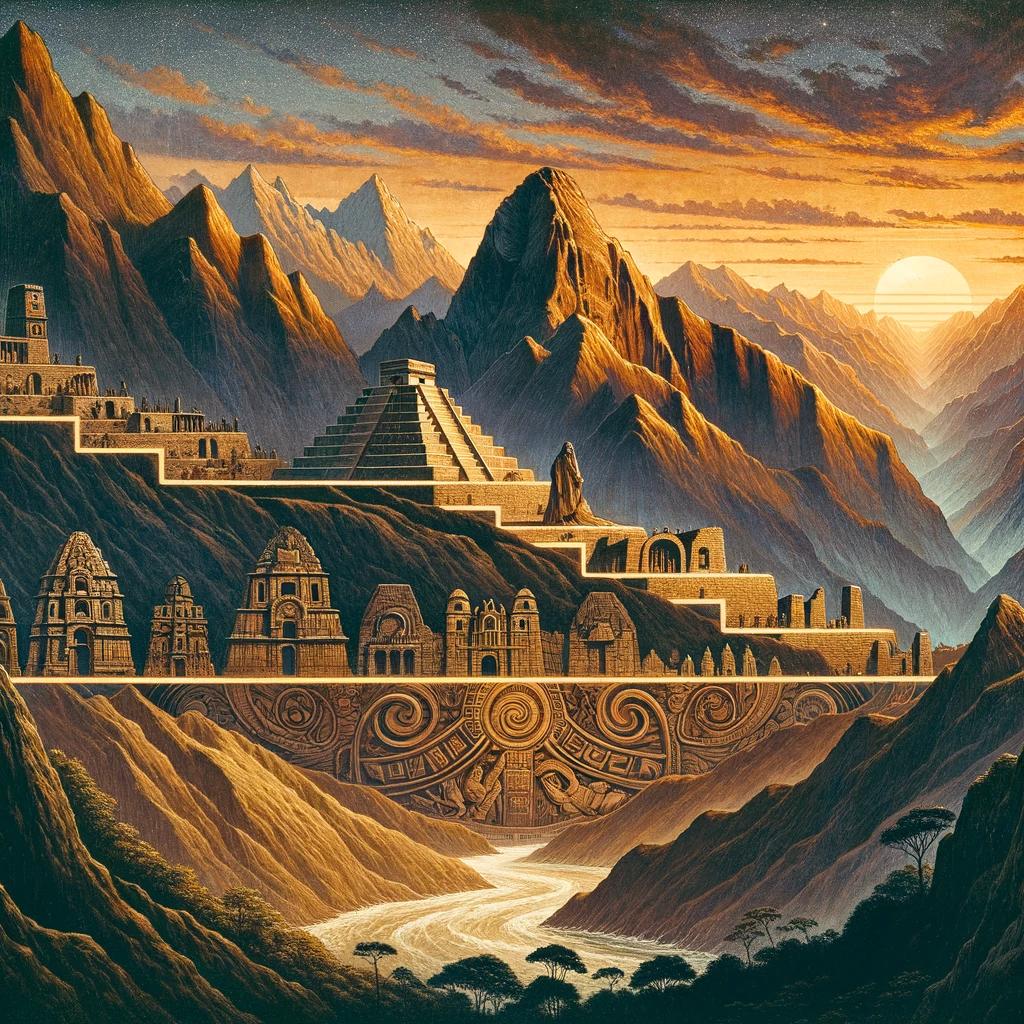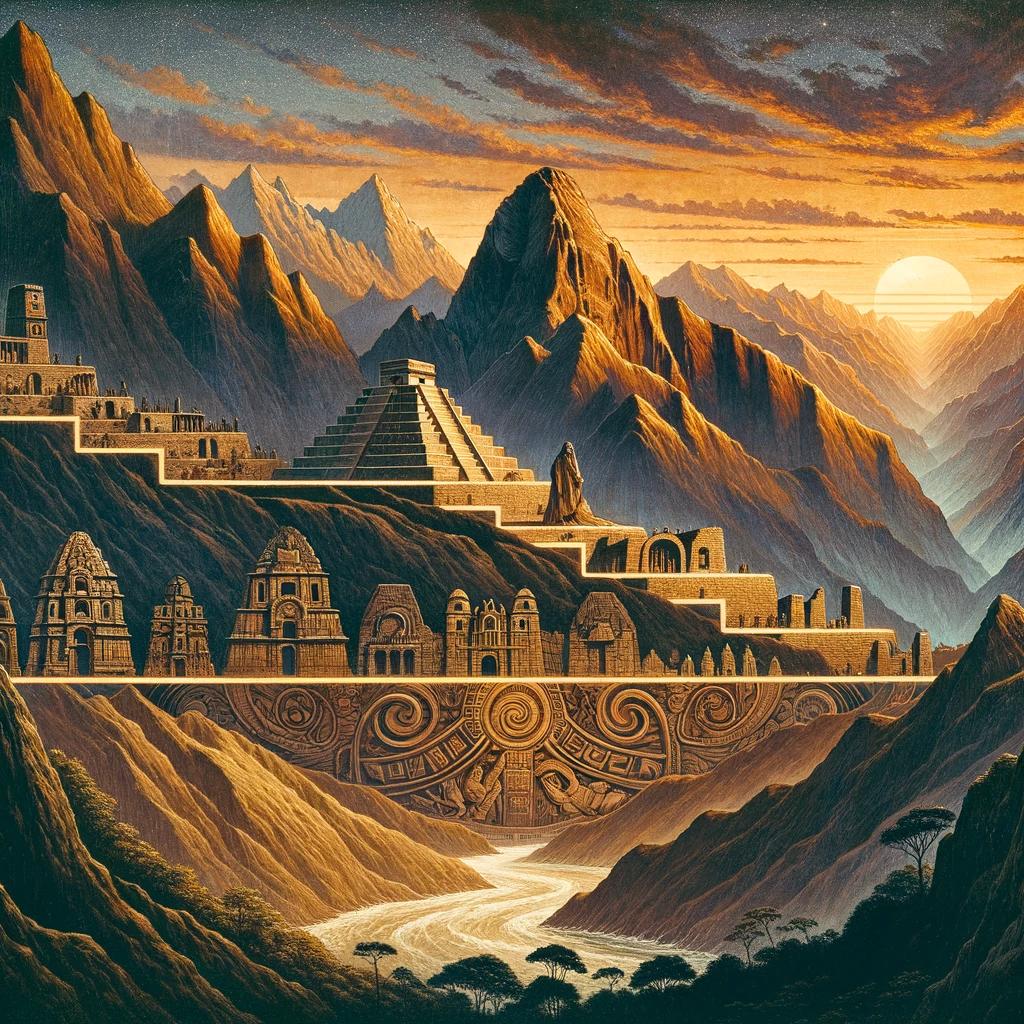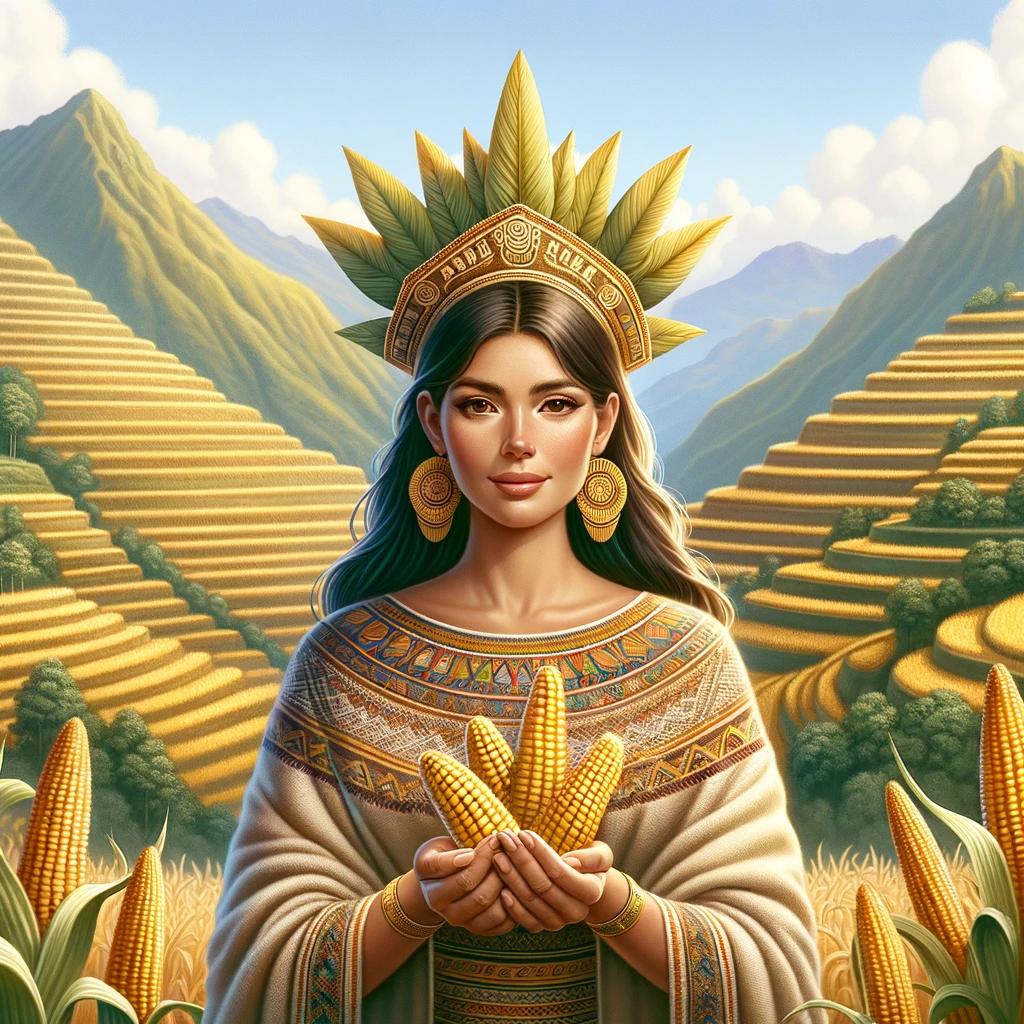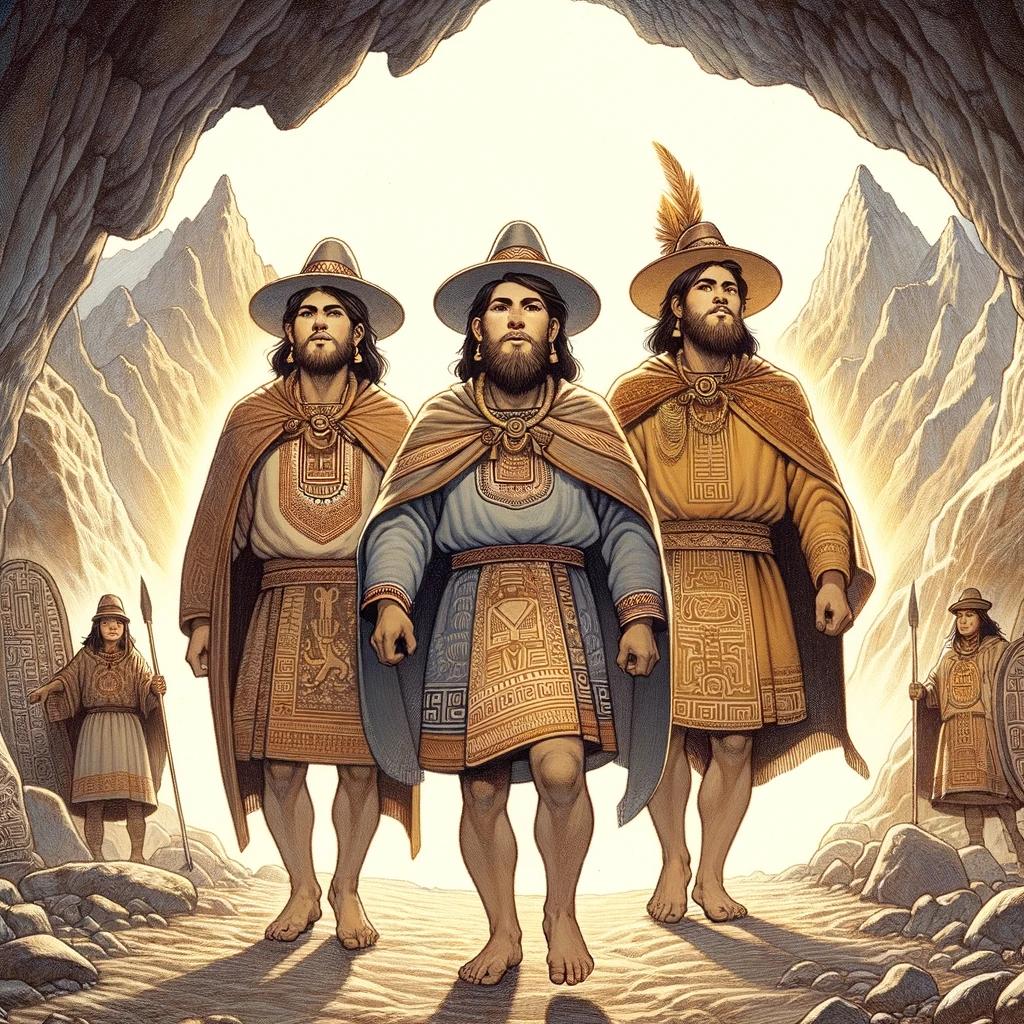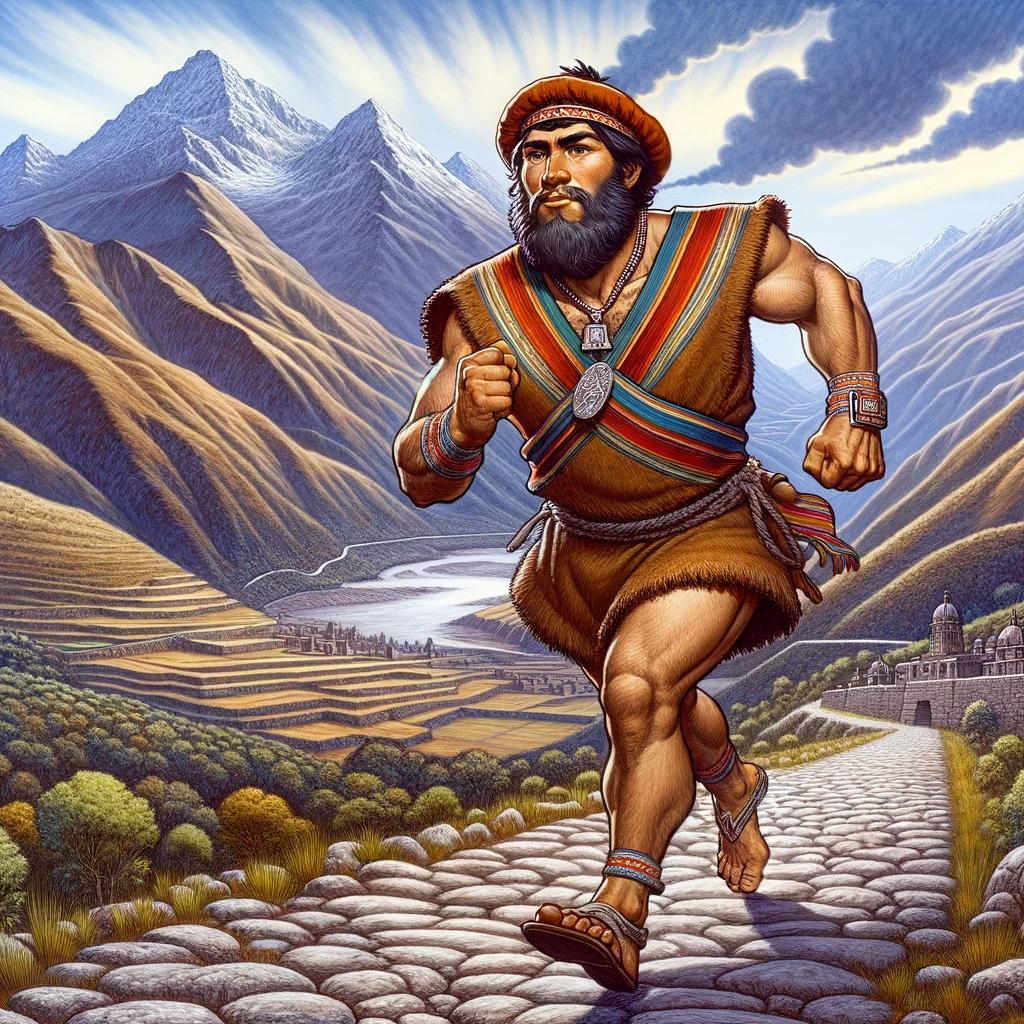Inca Mythological Creatures: Unveiling the Legends of Ancient Peru
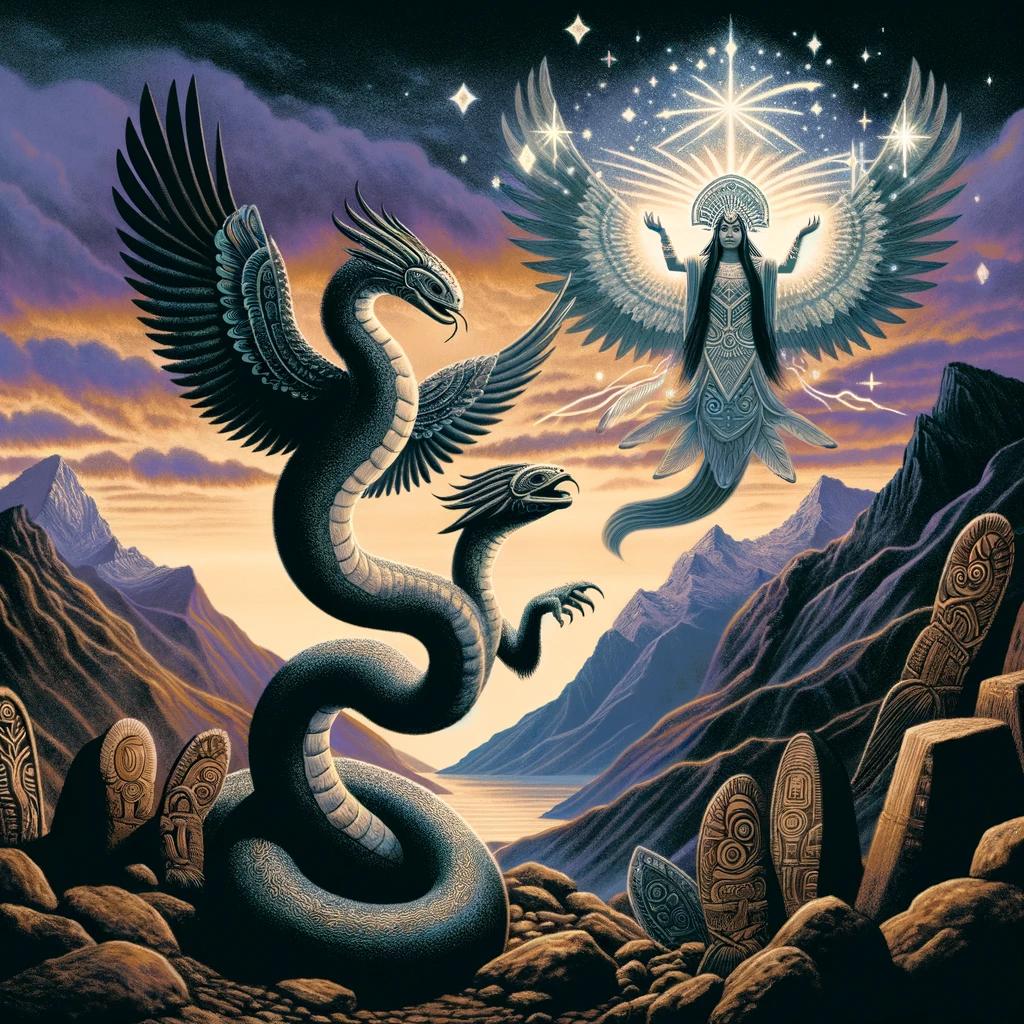
Inca Mythological Creatures are an integral part of Inca mythology, which encompassed legends and beliefs of the Inca Empire in ancient Peru. These mythical beings, such as the sacred serpent Amaru Khan and the messenger bird Condor, held significant symbolism in Inca culture.
From the supreme sun god Inti to war deities and earth goddess Pachamama, this article explores the diverse pantheon of Inca deities and creatures. Additionally, it delves into the influence of Inca mythology on art, architecture, and modern indigenous cultures.
Join us on this journey through the mystical world of Inca Mythological Creatures.
Overview of Inca Mythology
The Inca civilization was rich in mythology, with a vast array of tales and beliefs that shaped their religious and cultural practices. This section provides an overview of Inca mythology, delving into its origins, importance, key beliefs, and concepts, as well as its influence on Inca society.
Origins and Importance of Inca Mythology
Rooted in the cosmology of the Inca Empire, Inca mythology emerged as a means to explain the world and its phenomena from a spiritual perspective. It evolved and expanded as the Inca Empire flourished in present-day Colombia, Ecuador, Peru, Bolivia, Chile, and Argentina.
This mythology held significant importance in the lives of the Incas, influencing their religious rituals, societal structure, and worldview.
Key Beliefs and Concepts in Inca Mythology
Inca mythology incorporated a pantheon of deities and mythical creatures, all interconnected and responsible for various aspects of life. Central to their beliefs was the concept of animism, the belief that natural elements had spirits and consciousness.
Inca mythology placed great emphasis on the sun, considering it both a physical and spiritual entity, along with deities representing elements such as thunder, rain, and fertility.
Influence of Inca Mythology on Inca Society
Inca mythology held immense influence over Inca society.
It shaped their spiritual practices, social hierarchy, agricultural calendars, and even the political structure. Rituals and ceremonies dedicated to the gods played a central role in maintaining harmony with the natural and supernatural realms.
Inca mythology also inspired their art, architecture, and intricate oral storytelling traditions, solidifying its impact on their daily lives.
The Sun God Inti and Inca Creation Myth
In Inca mythology, Inti held a preeminent position as the Supreme God of the Sun. He was revered as the progenitor of all Inca people, bestowing life and energy through the sun’s rays.
According to Inca creation myth, Inti played a pivotal role in the formation of the world and the birth of the first Inca ancestors.
Inti: The Supreme God of the Sun
Inti, often depicted as a radiant figure, represented the powerful life-giving force of the sun.
As the primary deity in the Inca pantheon, Inti commanded utmost respect and worship. The Inca people believed that he closely observed their actions, guiding them towards prosperity and protecting them from harm.
Role of Inti in Inca Creation Myth
In the Inca creation myth, Inti played a fundamental role in the origins of humanity. According to the legend, Manco Cápac, the legendary founder of the Inca Dynasty, emerged from the depths of Lake Titicaca, brought forth by Inti himself.
This marked the beginning of human civilization in the eyes of the Inca people.
Worship and Rituals Dedicated to Inti
The worship of Inti played a significant role in Inca society. The Inca people held sacred rituals and ceremonies to honor Inti and express their gratitude for his life-sustaining energy.
One such notable celebration was the Inti Raymi, a grand festival held annually in Cusco during the winter solstice to pay homage to Inti and pray for a bountiful harvest year.
- Pilgrims from all corners of the empire flocked to Cusco, dressed in vibrant garments and adorned with symbolic jewelry, to participate in the festivities.
- The rituals involved elaborate processions, music, dance, and offerings of agricultural products to demonstrate devotion and seek blessings from Inti.
- The Inti Raymi ceremony showcased the spiritual significance of Inti and served as a unifying event for the Inca people, reinforcing their shared belief system.
Amaru Khan: The Sacred Serpent of Inca Mythology
Amaru Khan, the legendary and sacred serpent of Inca mythology, held a significant place in the belief system of the Incas.
This section delves into the mythical origins and symbolism of Amaru Khan, exploring its role in Inca culture and beliefs, as well as the captivating legends and stories associated with this revered creature.
Mythical Origins and Symbolism of Amaru Khan
- Amaru Khan was believed to have originated from the depths of lakes and rivers, embodying a powerful and transformative force in Inca mythology.
- As a symbol of both fertility and destruction, the serpent represented the cyclical nature of life and death, regeneration, and rebirth.
- The intertwined nature of Amaru Khan showcased its dualistic qualities, embodying both male and female aspects and illustrating the interconnectedness of all things.
Role of Amaru Khan in Inca Culture and Beliefs
- Amaru Khan was revered as a protector and guardian of treasures and riches hidden within the earth.
- The serpent’s association with water and fertility linked it to agricultural abundance, emphasizing its importance in ensuring bountiful harvests.
- Ceremonies and rituals dedicated to Amaru Khan were performed to seek its blessings for prosperity, protection, and spiritual guidance.
Legends and Stories Associated with Amaru Khan
- One prominent legend tells of Amaru Khan’s encounter with Manco Cápac, the legendary founder of the Inca Dynasty, helping him establish his rule over Cusco.
- According to another tale, Amaru Khan reportedly guarded hidden treasures, tempting adventurers who attempted to claim them.
- Stories also spoke of Amaru Khan’s profound wisdom, harboring secrets and esoteric knowledge that could only be accessed by those deemed worthy.
Unveiling the enigmatic tales and symbolism surrounding Amaru Khan offers a captivating glimpse into the fantastical world of Inca mythology and its rich cultural heritage.
War Deities in Inca Mythology
Inca mythology encompasses a pantheon that includes powerful deities associated with war and conquest. These war deities held significant importance in Inca society, reflecting the militaristic nature of the empire.
They were revered for their abilities in battle and their roles in ensuring the success of military campaigns.
Inti Wara: The God of War and Conquest
One prominent war deity in Inca mythology is Inti Wara, the god of war and conquest. Inti Wara was believed to possess immense strength and strategic prowess, guiding the Inca warriors into victorious battles.
He embodied the power and authority needed for successful military endeavors, and his worship and rituals played a crucial role in preparing warriors for combat.
Capacocha: The Sacrificial Rite to the War Deities
Capacocha was a sacrificial rite dedicated to the war deities in Inca mythology. It involved offering precious items, animals, or even human sacrifices to appease the war deities and seek their favor in battle.
Capacocha was performed with great solemnity and was believed to ensure divine protection and assistance for the Inca armies.
War as an Integral Part of Inca Society
Warfare held a central position in Inca society and was considered an integral part of the empire’s expansion and consolidation. The Inca rulers sought to demonstrate their military might, secure new territories, and subjugate rival groups through conquest.
The war deities served as symbols of strength and inspiration, fostering a warrior culture that emphasized discipline, bravery, and loyalty in battle.
Pachamama: The Earth Goddess
Pachamama, known as the Mother Earth and fertility deity in Inca mythology, holds a significant role in the spiritual beliefs and practices of the Inca people. She is revered as the nurturing force that provides sustenance and fertility to the land and its inhabitants.
Importance of Pachamama in Agricultural Practices
Pachamama’s importance in agricultural practices cannot be overstated. The Inca people recognized her as the source of abundance and prosperity, attributing successful harvests and agricultural fertility to her benevolence.
They believed that by respecting and honoring Pachamama, they would receive her blessings in the form of bountiful crops and a harmonious relationship with the land.
Rituals and Offerings to Honor Pachamama
To express their gratitude and devotion to Pachamama, the Inca people performed various rituals and offered sacrifices. They conducted ceremonies known as “Despachos,” in which they created intricate offerings using diverse elements such as food, flowers, and symbolic objects.
These were carefully arranged and then ceremoniously offered to Pachamama, accompanied by prayers and songs as a gesture of reciprocity and appreciation for her abundant gifts.
In addition to these Despachos, the Inca people participated in ritualistic practices that revolved around tilling the land, planting, harvesting, and other agricultural activities. These rituals aimed to ensure a harmonious coexistence between humans and nature, emphasizing the interconnectedness of all living beings and the mutual dependence between humans and Pachamama.
Today, the reverence for Pachamama continues among indigenous communities in the Andes region. They carry on the traditions of honoring and preserving the sacred relationship between humans and the Earth, recognizing the vital significance of Pachamama in their daily lives and spiritual practices.
The Inca Pantheon: Other Important Deities and Beings
Welcome to the fascinating realm of the Inca pantheon, where we delve into the myriad of deities and beings that held significant roles in Inca mythology.
Mama Quilla: Goddess of the Moon
Mama Quilla, the revered Goddess of the Moon, occupied a prominent position in the Inca pantheon.
She was believed to shape and control lunar cycles, influencing agricultural activities and fertility. With her radiant presence, Mama Quilla symbolized femininity, motherhood, and the divine link between humans and celestial realms.
Viracocha: Creator Deity in Inca Mythology
Viracocha, the Creator Deity, held immense importance in Inca mythology. Often depicted as a bearded figure emerging from the water, Viracocha was revered as the bringer of civilization and the ultimate shaper of the physical world.
Inca narratives attributed various creation stories to Viracocha, emphasizing his power to mold humanity and the natural environment.
Wiraccocha: The Supreme God
Wiraccocha, the Supreme God, occupied the highest position in the Inca pantheon. Revered as the cosmic creator and the ultimate divine force, Wiraccocha was believed to guide the destiny of the Inca Empire.
Inca mythology bestowed upon Wiraccocha the power to shape the cosmos, influence natural forces, and determine the fate of mortals.
Explore the extensive lore and captivating tales surrounding these influential deities and their significance in shaping Inca cosmology and spirituality.
Mythical Creatures in Inca Mythology
Inca Mythology is rich with fascinating creatures and beings that hold significant importance in their belief system. These mythical creatures are deeply ingrained in Inca culture, capturing the imagination of the people through their symbolism and mystical attributes.
Cóndor: The Sacred Messenger Bird
The Cóndor, also known as the Andean Condor, holds a sacred place in Inca mythology. It is revered as a powerful messenger, believed to have the ability to communicate between the world of gods and humans.
Represented in numerous paintings and sculptures, the Cóndor embodies spiritual wisdom, freedom, and elevation. Its majestic presence signifies divine guidance and the connection between the celestial and earthly realms.
Supay: The Deity of the Underworld
Supay, the deity of the underworld in Inca mythology, is associated with death, darkness, and the realm of the dead.
Revered as a powerful and mysterious figure, Supay holds significant influence over the afterlife. In Inca beliefs, the spirits of ancestors reside in the underworld, with Supay serving as their guardian.
The ceremonies and rituals dedicated to Supay are aimed at appeasing and honoring the spirits of the deceased.
Huayra: The God of Wind
Huayra, the god of wind, holds a prominent position in Inca mythology. In Inca cosmology, the wind was considered a fundamental force that shaped the natural world. Huayra was believed to control the direction and intensity of the wind, which affected weather patterns and agricultural productivity.
Inca rituals and offerings were dedicated to Huayra to seek his favor for favorable winds and bountiful harvests.
The mythical creatures in Inca mythology, such as the Cóndor, Supay, and Huayra, represent different aspects of the natural and spiritual realms.
Their symbolism and significance offer a glimpse into the rich belief system of the Inca civilization and their deep connection to the natural world.
Inca Mythology’s Influence on Art and Architecture
The rich tapestry of Inca mythology has left a lasting impact on the art and architecture of the ancient civilization.
The iconography of Inca mythological creatures is prominently featured in various artistic expressions, serving as a visual representation of their beliefs and cosmology.
Iconography of Inca Mythological Creatures in Art
The art of the Incas vividly portrays the mythological creatures that held significant cultural and religious importance.
The intricate carvings, pottery designs, and textiles depict creatures such as the sacred serpent Amaru Khan, the majestic condor, and the gods themselves.
Through detailed craftsmanship, these representations capture the essence of Inca mythology, conveying stories and spiritual teachings to future generations.
The vibrant colors, intricate patterns, and meticulous attention to detail give life to these mythical beings.
Sacred Sites and Temples Dedicated to Inca Deities
Architecture played a crucial role in showcasing the reverence and devotion towards Inca deities. Sacred sites and temples were constructed with precision and strategic design to honor specific gods and their associated mythological creatures.
Machu Picchu, a mesmerizing testament to Inca engineering, stands as a prime example. This renowned citadel is adorned with stone structures that pay homage to the sun god Inti and other deities, beautifully integrating mythological elements throughout its layout.
In addition to Machu Picchu, the Temple of the Sun in Cusco is another notable architectural marvel dedicated to the worship of Inti, giving testament to Inca mythology’s influence on the built environment.
Integration of Mythological Themes in Inca Architecture
The Inca civilization seamlessly integrated mythological themes into their architectural designs. The alignment of temples and structures with celestial events served as a spiritual connection between the physical and metaphysical realms.
The meticulous incorporation of solar and astronomical alignments in the layout of buildings, such as the Temple of the Sun, showcased the belief in divine forces and their influence on earthly affairs.
This integration of mythological symbolism reinforced the cultural identity and spiritual significance present in every aspect of Inca life.
The architectural legacy of the Incas not only immortalizes the mythical creatures and gods but also serves as a testament to their deep connection with the spiritual realm.
Through art and architecture, Inca mythology continues to captivate and inspire people with its profound symbolism and rich cultural heritage.
Continuity of Inca Mythology in Modern Times
The rich tapestry of Inca Mythology continues to resonate in modern times, demonstrating the enduring influence of these ancient beliefs and legends. Let’s explore how Inca Mythology has been preserved, celebrated, and embraced by indigenous cultures today.
Preservation and Revival of Inca Mythology
Inca Mythology’s legacy has been diligently preserved and revived through the efforts of scholars, historians, and indigenous communities. Researchers have worked tirelessly to document and study the myths and legends, ensuring their preservation for future generations.
Indigenous communities have actively engaged in cultural revival movements, seeking to rekindle the spiritual connection with their ancestors and revitalize the ancient traditions linked to Inca Mythology.
Celebrations and Festivals Honoring Inca Deities
A multitude of vibrant celebrations and festivals are held throughout the Andean region, paying homage to the Inca deities and their mythological counterparts.
These events serve as a nexus of cultural pride and heritage, reenacting ancient rituals, dances, and music that have been passed down through generations. Inti Raymi, the Festival of the Sun, is one such grand celebration where devotees come together to offer their gratitude to Inti, the sun god, and participate in traditional ceremonies.
Influence of Inca Mythology on Indigenous Cultures Today
The profound influence of Inca Mythology can be witnessed in various aspects of contemporary indigenous cultures. It has shaped their spiritual beliefs, artistic expressions, agricultural practices, and social structures. Inca mythological motifs continue to adorn textiles, pottery, and artworks created by indigenous artisans, serving as a testament to their reverence for the ancient deities.
Furthermore, Inca Mythology provides a sense of cultural identity, fostering a connection to the ancestral past and reinforcing the resilience of indigenous communities in the face of modern challenges.
.

